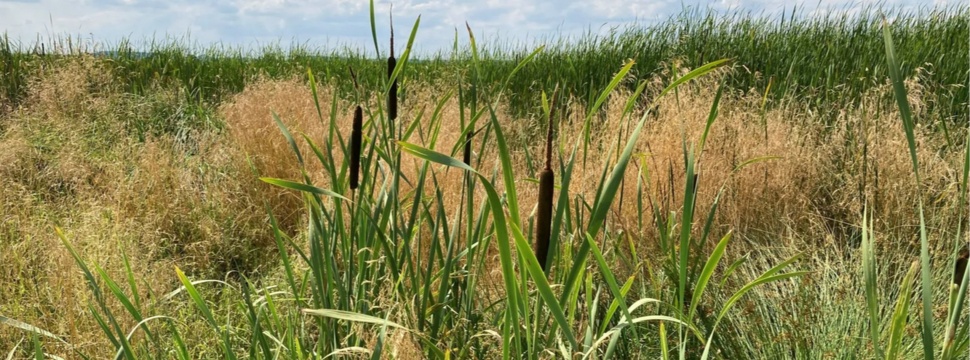Plant fibres from peatland-compatible crops
News General news
The project "Plant fibres from peatland-compatible crops" investigates which wet crops from peatland-friendly cultivation are best suited for fibre production and subsequent further utilisation.

In order to achieve sustainable project results within the framework of the overall project "Climate protection through bog soil protection using the example of the Bavarian Danube moss", which is funded by the State Ministry for the Environment and Consumer Protection and the State Ministry for Food, Agriculture and Forestry, the focus is to be increasingly on the development and establishment of agricultural value chains. Special attention will be paid to the different utilisation options for the harvested crops produced by peatland conservation farming. To this end, the first step will be to investigate the pulping of peatland plants as a raw material for the production of paper, cardboard and free-form parts.
The short project, which began in December 2022, is intended to fulfil several sub-objectives:
- Investigate the possibility of producing industrially usable plant fibre raw materials from crops grown on peatland sites, in particular wetland-tolerant crops, but also green cuttings.
- Investigation of the fibre quality of the various source crops, especially with regard to further processing in the paper industry.
- Definition of quality requirements of the harvested and first-processed input material, suitability of different crops
- Consideration of the value-added possibilities
- Decision template for further trials with the most promising fibres
The climate goals in Bavaria have been formulated ambitiously. For example, the moorland protection strategy focuses on establishing a CO2 sink in the moors. Especially in the Donaumoos, the largest lowland moor in southern Germany with a spatial extent of 180 square kilometres, there is enormous potential. However, the envisaged goal of 2000 hectares of moorland conservation area to be realised by 2030 can only be achieved with significant alternative income opportunities for agriculture.
One possibility is the pulping of peatland plants and marketing them as raw materials for the production of paper, cardboard and free-form parts. With easily broken up moisture-tolerant permanent crops on peat soils, a great deal of carbon dioxide can be saved in fibre and fibre product production compared to wood as a raw material due to the significantly shorter production cycles. In addition, the waste paper market, which is important for the fibre industry, can only cover demand to a limited extent and a regional raw material source from peatland cultivation represents an interesting supplement. Overall, there is a high demand on the market for biodegradable solutions from renewable raw materials in combination with the associated CO2 savings potential. This is also related to the increasing ban on disposable articles and packaging. Since mid-2021, certain products made of plastic have already been banned at EU level; in addition, a reusability obligation has been in force in Germany since the beginning of 2023 in certain areas, for example in the food trade.










